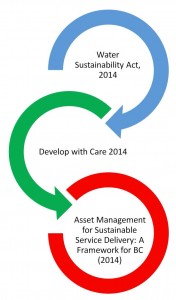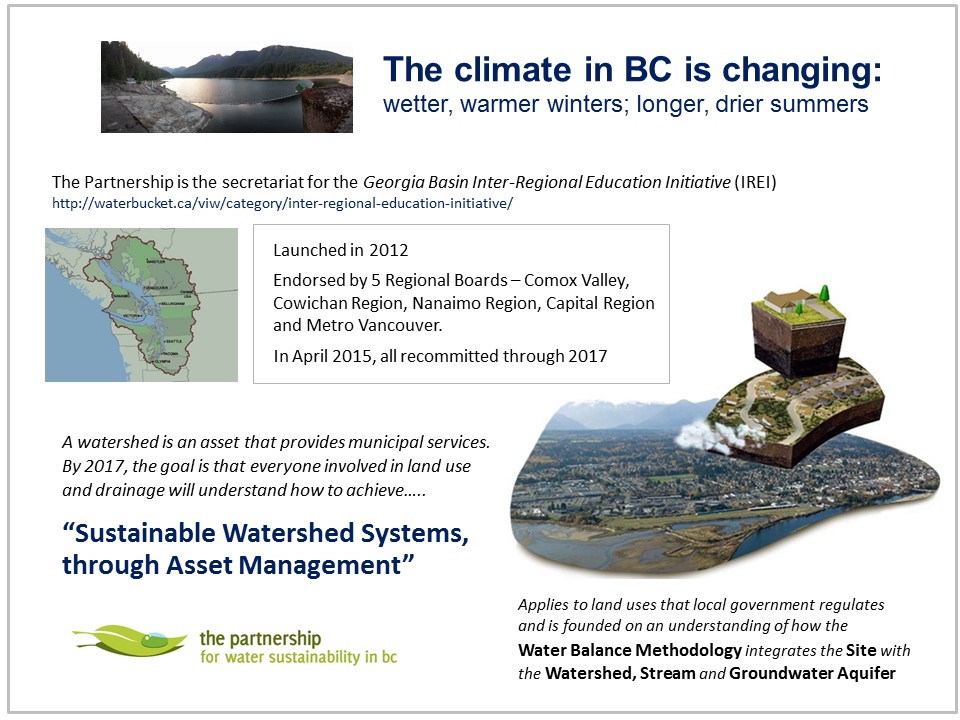The New Paradigm: Watershed Systems as Infrastructure Assets
Note to Reader:
The Fall 2015 issue of the Asset Management BC Newsletter includes an article by the Partnership for Water Sustainability in BC. Co-authored by Kim Stephens (Partnership Executive Director), Kate Miller (Cowichan Valley Regional District) and Richard Boase (District of North Vancouver), the article introduces the Asset Management BC audience to the concept of Sustainable Watershed Systems, through Asset Management.
Moving Towards “Sustainable Watershed Systems, through Asset Management”
The ‘new normal’ in British Columbia is floods and droughts. The summer dry season has extended on both ends and we can no longer count on a predictable snowpack and reliable rain to maintain a healthy water balance in our watersheds. Annual volumes of water entering and exiting our regions are not necessarily changing; instead, what is changing is how and when water arrives – it is feast AND famine!
A systems approach to watershed health and protection recognizes that actions on the land have consequences for the three pathways to streams and hence the water balance of the watershed. Those consequences are felt in both dry weather and wet weather – too little or too much water, respectively.
Watershed Systems as Infrastructure Assets
Where a local government regulates land use, a watershed is an integral part of the drainage infrastructure assets of the local government. More specifically, the three pathways (surface, interflow, groundwater) by which rainfall reaches streams are infrastructure assets. They provide ‘water balance services’. As such, protection and maintenance of the three pathways has financial, level-of-service and life-cycle implications for asset management.
 Released in December 2014, Asset Management for Sustainable Service Delivery: A Framework for BC makes the link between local government services, the infrastructure that supports the delivery of those services, and watershed health.
Released in December 2014, Asset Management for Sustainable Service Delivery: A Framework for BC makes the link between local government services, the infrastructure that supports the delivery of those services, and watershed health.
The article provides context and describes why the BC Framework and two other provincial game-changers are drivers for Sustainable Watershed Systems, through Asset Management. It then introduces the ‘Water OUT= Water IN’ mind-map for looking at the Water Balance differently. Finally, the article enlightens how the Georgia Basin Inter-Regional Educational Initiative (IREI) would facilitate integration of watershed systems thinking and adaptation to a changing climate into asset management.
Resilient Rainwater Management accounts for all rainfall-days per year. Emphasis is on soil-water interaction, how rainwater reaches streams via three pathways in a watershed (i.e. surface runoff, lateral interflow in shallow soils, deep groundwater), and performance targets for ‘design with nature’ solutions. These address both water supply and drainage. The technical foundation is the Water Balance Methodology.
To Learn More:
To download and read the complete article, click on Feast AND Famine: Moving Towards “Sustainable Watershed Systems, through Asset Management”



